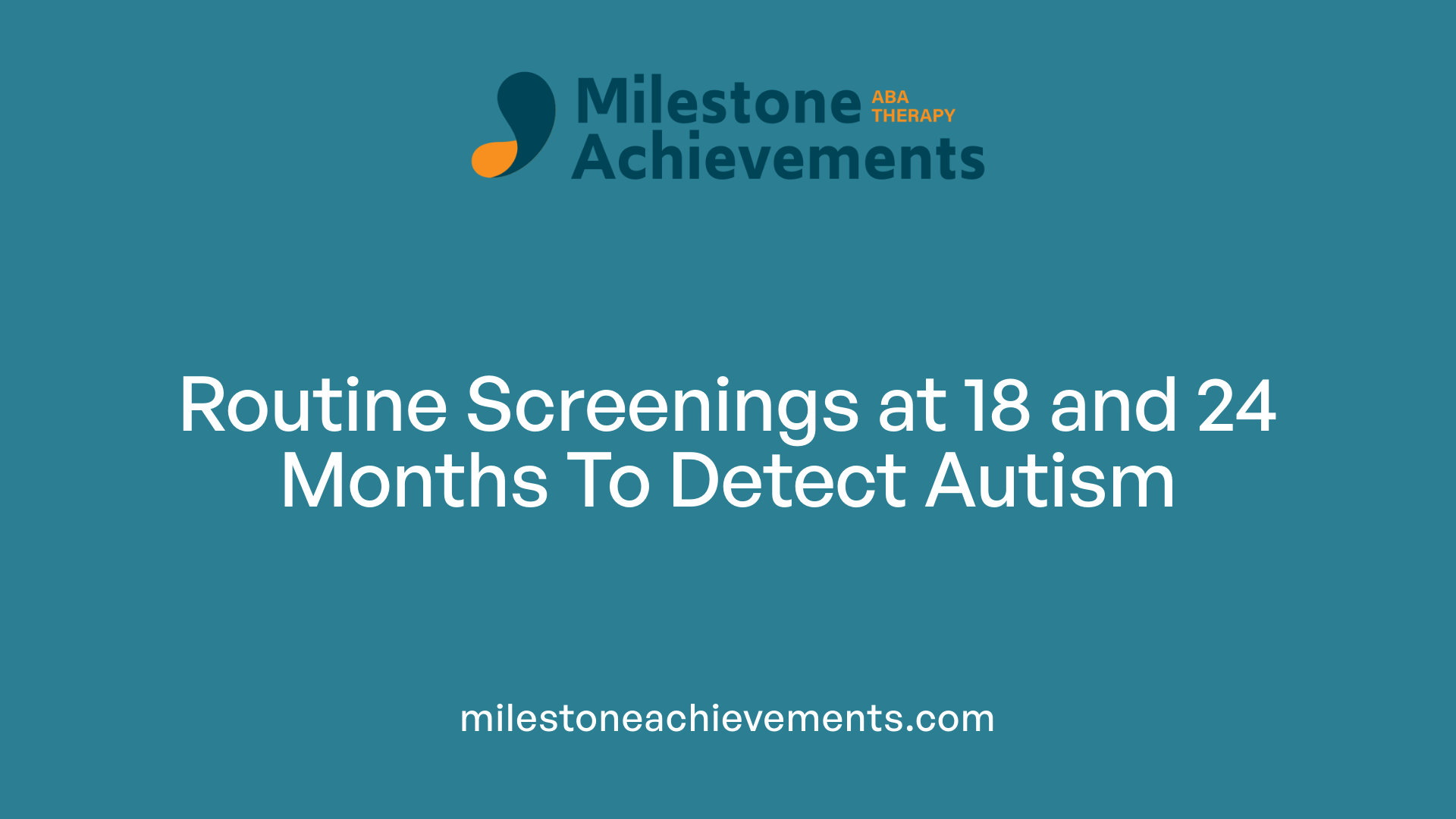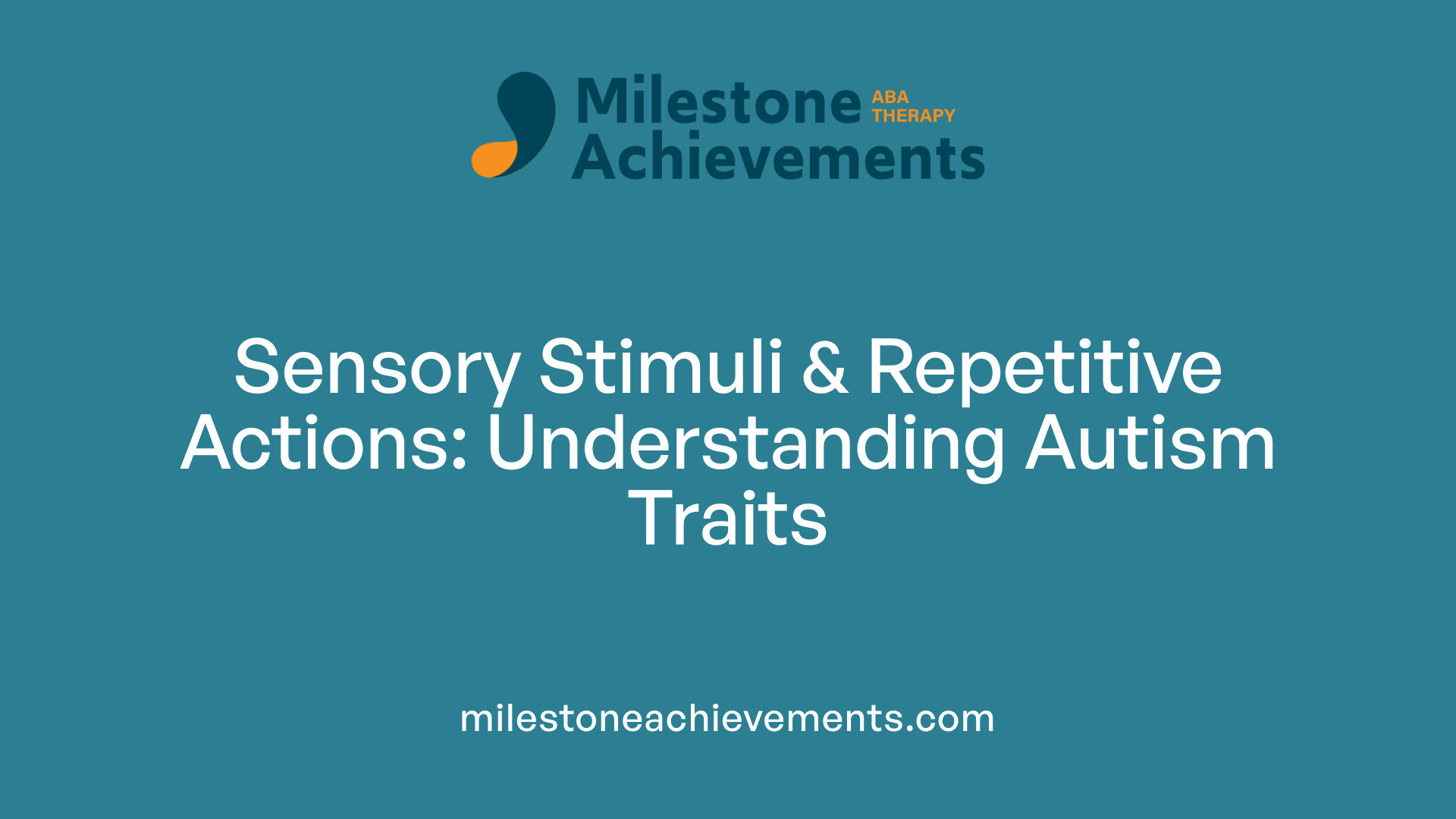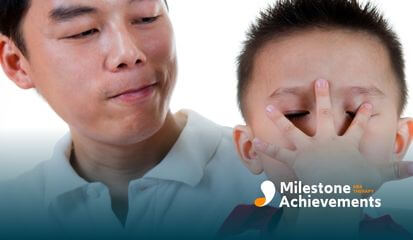
Identifying Autism in Toddlers
Spotting Early Signs of Autism in Young Children
Understanding Autism in Early Childhood
Recognizing autism spectrum disorder (ASD) in toddlers is crucial for early intervention. Although every child develops at their own pace, certain signs can indicate the need for professional evaluation. This article explores the early behavioral and developmental indicators of autism, how to differentiate typical development from concerns, and when to seek help.
Early Behavioral Indicators of Autism in Toddlers

What are the early signs of autism in toddlers?
Early recognition of autism spectrum disorder (ASD) can significantly impact a child's development and access to support. Specific behaviors often served as early indicators, providing caregivers and healthcare professionals with valuable clues in identifying children at risk.
One prominent early sign is avoidance of eye contact. Many young children with autism do not naturally look into others' eyes when interacting or playing. By around 9 months of age, children typically respond to their name and show interest by making eye contact, but children with autism may ignore these cues.
Another important sign is the lack of smiling or facial expressions. Usually, babies smile back and use facial cues to connect with caregivers, but autistic toddlers may rarely smile in response to others or display a limited range of facial expressions.
Communication delays manifest as limited or absent babbling and speech. While some delay in speech development can be typical, persistent speech delays or not using sounds and words as expected are particular concerns. Some toddlers may show no attempt to imitate sounds or gestures, and their language might be unusual or limited.
Repetitive movements are common in early autism signs. These include body actions like hand-flapping, flicking fingers, rocking, or spinning objects repeatedly. Such behaviors often serve as a source of comfort or stimulation for autistic children.
Interest in pretend play and social interaction is also affected. Toddlers with autism often show little to no interest in imitation games like
Developmental Milestones and Autism
How can parents distinguish typical developmental milestones from signs of autism?
Parents should observe whether their child is meeting age-related behavioral markers in social, language, and motor skills. Most children start smiling, babbling, and sharing interests by specific ages. For example, by 12 months, children typically respond to their name and imitate gestures like waving or pointing.
In contrast, children with autism may not respond to their name by 9 months, show limited eye contact, or avoid social gestures altogether. Repetitive behaviors such as hand-flapping, lining up toys, or insisting on routines can also be signs.
Signs of autism can present as early as 6 months, including limited eye contact and lack of back-and-forth sharing of sounds or expressions. By 12 months, the absence of simple gestures like pointing or waving is noteworthy. Delays in language development, such as not babbling or using few words, may become more apparent by 16-24 months.
Other red flags include regression in skills, such as losing previously acquired speech or social skills, typically between 15 and 24 months. Persistent delays or atypical responses should prompt parents to seek professional evaluation. Early identification allows for early intervention, which can significantly improve a child's developmental trajectory.
Healthcare providers often use screening tools like the M-CHAT-R at 18 and 24 months during routine visits. Recognizing these early signs enables timely support and helps children reach their full potential.
Key Developmental Screening and Timeframes

When should parents seek professional evaluation for autism in toddlers?
Parents should seek a professional evaluation if they notice their toddler exhibiting signs that are not typical for their age. For example, if a child does not respond to their name by 9 months, shows limited or no gesturing or babbling by 12 months, or does not point to share interest by 18 months, it may be time to consult a specialist. Other behaviors such as poor eye contact, limited social interaction, repetitive movements, or unusual sensory reactions are also indications.
The American Academy of Pediatrics recommends routine autism screening at both 18- and 24-month checkups. These screenings help identify children at risk early in life. However, any concern or developmental delay observed at any age should prompt a discussion with a healthcare provider.
Early diagnosis can lead to earlier intervention, which improves communication skills, behavior, and social development. Children on the autism spectrum often sit, crawl, and walk on time, but differences in gestures, pretend play, and social language can go unnoticed without thorough screening.
Ultimately, if parents or caregivers observe persistent concerns, they should not wait but seek professional evaluation promptly to ensure their child receives appropriate support and resources.
| Age | Typical Development Milestones | Signs for Concern | Recommended Action |
|---|---|---|---|
| 9 months | Responds to name, shows facial expressions, makes eye contact | Does not respond to name, no eye contact, limited facial expressions | Seek evaluation if concerns persist |
| 12 months | Uses gestures, babbling, interacts with others | Limited or no gestures, no babbling, minimal social interaction | Consult a healthcare professional |
| 15-18 months | Begins to point, shares interests | No pointing, no interest in shared activities | Discuss concerns with specialist |
| 24 months | Uses simple words, follows instructions | No spoken words, limited social response | Seek assessment early |
| 36 months | Engages in pretend play, interacts with peers | Limited pretend play, difficulty making friends | Contact a specialist promptly |
Understanding Sensory and Behavioral Traits in Autism

What are the early warning signs for autism spectrum disorder in toddlers?
Early signs of autism in toddlers often involve noticeable differences in sensory processing and behavior. Toddlers with autism might react intensely or unusually to sounds, textures, sights, or smells. For instance, they may cover their ears in noisy environments, avoid certain textures of clothing or food, or seem overly fascinated or distressed by specific sights.
Repetitive actions are common early indicators. These can include lining up toys, flicking fingers, or rocking their bodies. Echolalia, or repeating words and phrases, is also a typical trait, and children might echo sentences they hear in a robotic or adult-like tone.
Another characteristic is a strong, focused interest in particular objects or topics, often restricted compared to peers. This could be an intense fascination with spinning wheels, specific characters, or certain types of toys.
Behavioral challenges such as trouble adapting to changes in routine and heightened emotional responses are also signals. A child might become very upset if their schedule is altered or if they encounter new experiences.
Monitoring developmental milestones is crucial. Red flags include not responding to their name by 9 months, limited eye contact, and challenges in sharing attention with caregivers. These signs should prompt early evaluation, as early diagnosis and intervention can greatly improve a child's social, communication, and behavioral skills.
Regular developmental screenings during well-child checkups help identify these early signs, ensuring children receive the support they need promptly.
Gender Differences in Autism Presentation
How can autism signs differ between girls and boys?
Autism can appear differently in boys and girls. While boys often display more noticeable repetitive actions and less subtle social differences, girls tend to show symptoms that are easier to mask or hide.
In many cases, girls may copy behaviors from others, making their autism less obvious. They might withdraw in challenging social situations and develop stronger coping strategies, allowing them to blend in better during interactions. Consequently, girls with autism often have fewer repetitive behaviors compared to boys.
Subtle signs and masking behaviors
Girls may engage in masking—adopting behaviors that appear typical to hide their difficulties. This includes mimicking social cues, pretending to be interested in conversations, or engaging in more typical play.
They might also exhibit withdrawal as a way of coping with overstimulation or social anxiety. This withdrawal can be mistaken for shyness or a reserved personality, delaying recognition of autism.
Withdrawal and copying of behavior as coping mechanisms
Withdrawal helps girls manage sensory overload and social stress. Copying behavior—such as imitating others’ actions or speech—serves as a social strategy to fit in better.
This adaptive masking can make diagnosis challenging and delay access to support and intervention.
Differences in social coping and social participation
Girls with autism often develop better social coping skills than boys, leading them to participate more in social settings. Despite this, they may still struggle with understanding social cues or forming deep friendships.
Their social participation might look typical, but underlying difficulties in social understanding may persist. Recognizing these subtle signs is essential for timely support.
This variation underscores the importance of awareness about how autism presents differently in girls, encouraging thorough assessment beyond observable behaviors.
The Role of Sensory Stimuli and Repetitive Actions in Autism
What are some common characteristics of autism in children?
Children on the autism spectrum often exhibit difficulties in social communication and interaction. They may engage in restricted or repetitive behaviors, interests, or activities. These behaviors can sometimes interfere with their daily life, making routines and social interactions more challenging.
How do sensory sensitivities influence children with autism?
Many children with autism are hypersensitive or under-sensitive to sensory stimuli such as sounds, textures, smells, or sights. For example, loud noises might upset them significantly, or they may seek out certain textures or sensations to soothe themselves. These sensitivities can affect their reactions and preferences, impacting their ability to participate comfortably in everyday activities.
What are common repetitive behaviors?
Repetitive actions are typical in children with autism. Common behaviors include lining up toys, flapping their hands, flicking fingers, rocking their body, or spinning objects. These motions often serve as self-stimulation or ways to cope with overwhelming sensory input.
How do these behaviors impact routines and social interactions?
Repetitive behaviors and sensory sensitivities can influence a child's routines, sometimes making it difficult to adapt to change. Such behaviors might also affect social interactions, as children may find it challenging to engage with peers or adapt to new environments. Recognizing these behaviors is crucial for providing appropriate support and fostering better social experiences.
| Behavior Type | Examples | Effect on Daily Life |
|---|---|---|
| Repetitive Movements | Hand-flapping, rocking, flicking fingers | Can interfere with learning, social interaction, or participation in activities |
| Sensory Reactions | Overreaction to loud sounds, textures, or sights | May cause distress or avoidance of certain environments |
| Routine Preferences | Liking strict schedules or getting upset when routines change | Challenges flexibility and adaptation in daily life |
Understanding these behaviors helps caregivers and educators provide effective strategies to support children on the spectrum, promoting more positive daily experiences and social connections.
Encouraging Early Support and Intervention
Why is early intervention important?
Early support can significantly improve outcomes for children on the autism spectrum. When signs are detected early—often by age 2—children have better chances to develop communication, social skills, and independence. Timely intervention helps address developmental delays, reduce behavioral challenges, and support children in reaching their full potential.
How can parents support children with autism using tailored strategies?
Supporting children involves creating a consistent routine, using visual aids, and encouraging social interactions in a comfortable setting. Focused play that promotes imitation and sharing interests can boost social skills. It's also helpful to work with specialists who can customize approaches based on the child's individual needs, emphasizing strengths and addressing challenges.
What early resources and guidance are available for parents and caregivers?
Parents are encouraged to seek guidance from healthcare professionals during well-child visits—especially at 9, 18, and 24 months. Accessing reputable resources, such as autism support organizations, online tools like the ASDetect app, or the 'Spectrum' booklet, can provide valuable insights. Local support groups and early childhood development services also play a vital role in offering ongoing assistance and connecting families with specialists.
The Importance of Early Action in Autism Spectrum Disorders
Recognizing the early signs of autism in toddlers enables timely intervention, which can significantly improve developmental outcomes. While these signs can be subtle, awareness and proactive monitoring by parents and caregivers are vital. Routine developmental screening, open communication with healthcare professionals, and understanding individual differences, including gender-related variations, can make a substantial difference in supporting children on the autism spectrum. Early action fosters better social, communicative, and behavioral skills, setting a foundation for improved quality of life.
References


Partner with us on your child's journey
Milestone Achievements offers evidence-based ABA therapy to help children with autism reach their full potential. Together we’ll set meaningful goals and celebrate progress every step of the way.
Start ABA Services Today


